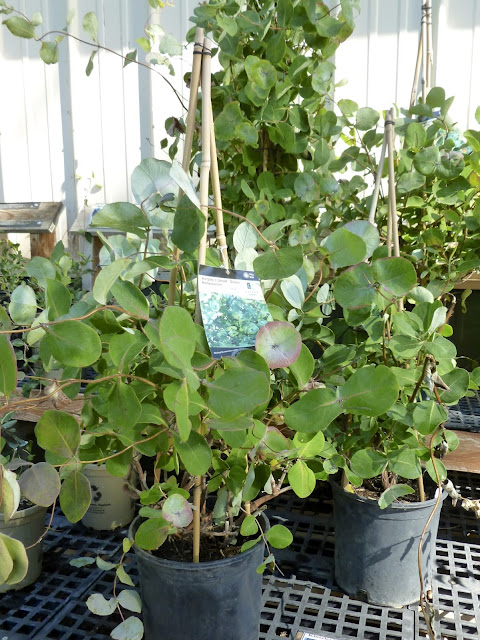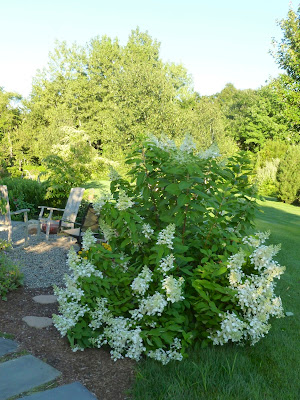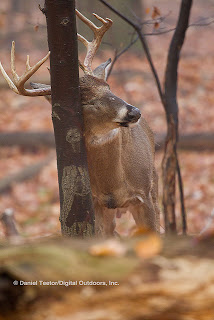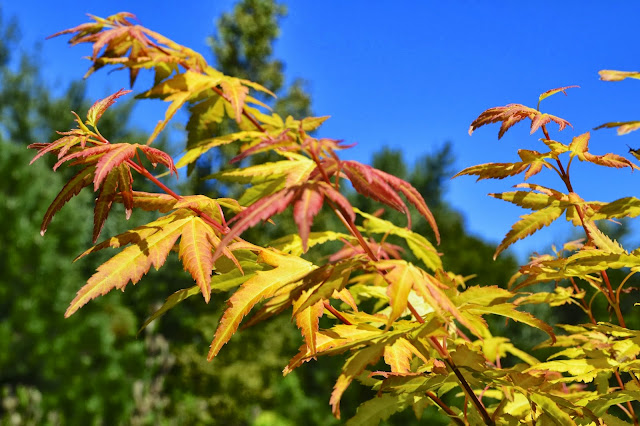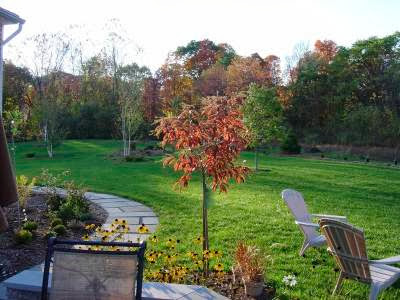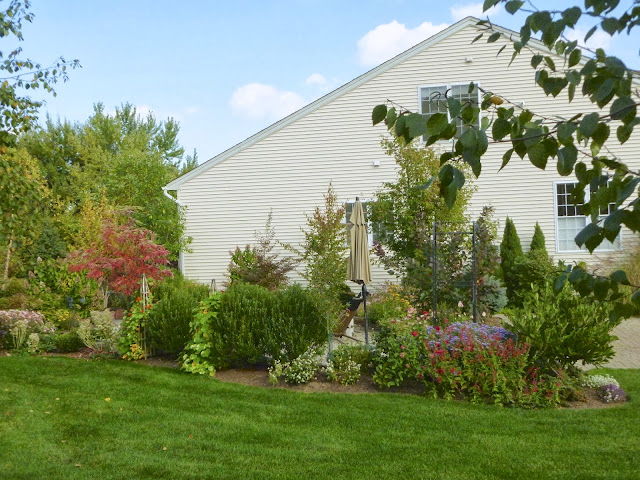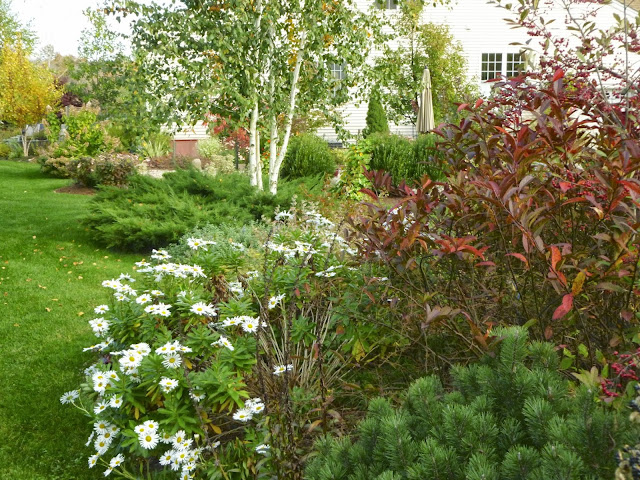I am back from visiting other worlds. It felt like that -- to go from my green, leafy suburban garden in the forested east to the dry brown vastness of the west is like going to another planet entirely.
Not only have both of my sons settled in landscapes so different from where they grew up, they both live now in completely urban settings, one in downtown Denver and the other in L.A. To go from my quiet, secluded enclave to their vibrant, crowded city lives is head spinning.
In Colorado the sky and horizon and mountains along the front range are humbling. This was the scene from Red Rocks Amphitheater the night we went to a concert there.
In Los Angeles it's the outsized scale and bustle and flash and artificiality that overwhelm.
I loved every minute of my time with both of them in worlds so strange!
As I mentioned in prior posts, I had a lead on getting a 'Kintzley's Ghost' honeysuckle to replace the plant that was mis-marked and came up as a trumpet honeysuckle despite its label.
And I got it. We drove up to Fort Collins, 45 minutes north of Denver, to the nursery that introduced Dr. Kintzley's unusual vine, and I saw beautiful large pots of them. No mislabeling here; I can see for myself the leaf shape and the whitish round bracts forming.
But putting a plant that size in my carry on bag was not an option. So this is what I brought home, stuffed in my computer bag, x-rayed by TSA and no worse for it all.
I can't wait to get this little plant going in my garden (after I figure out what to do with the very nice but unplanned-for red trumpet honeysuckle.)
When I returned home and reoriented to the greenery and lushness, I was surprised at how the garden had exploded in just the week I was gone. Black eyed Susans filled in, late season panicle hydrangeas are blooming, and the pretty pink fall anemone has towering flower stalks now.
Even a row of marigolds in little pots lined up at the edge of the gravel area grew. They have been blooming all summer, but in their little containers they were small and tidy. Now they are suddenly big and fat.
The 'White Chiffon' Rose of Sharon outside the porch is blooming, and for the first time I can see it through the windows. The porch remodeling proceeded apace while I was gone, and now taller windows have been installed. I am liking this development as much as the new blooming specimens in the garden.
It's always nice to go away and come back.
![]()
Not only have both of my sons settled in landscapes so different from where they grew up, they both live now in completely urban settings, one in downtown Denver and the other in L.A. To go from my quiet, secluded enclave to their vibrant, crowded city lives is head spinning.
In Colorado the sky and horizon and mountains along the front range are humbling. This was the scene from Red Rocks Amphitheater the night we went to a concert there.
In Los Angeles it's the outsized scale and bustle and flash and artificiality that overwhelm.
I loved every minute of my time with both of them in worlds so strange!
As I mentioned in prior posts, I had a lead on getting a 'Kintzley's Ghost' honeysuckle to replace the plant that was mis-marked and came up as a trumpet honeysuckle despite its label.
And I got it. We drove up to Fort Collins, 45 minutes north of Denver, to the nursery that introduced Dr. Kintzley's unusual vine, and I saw beautiful large pots of them. No mislabeling here; I can see for myself the leaf shape and the whitish round bracts forming.
But putting a plant that size in my carry on bag was not an option. So this is what I brought home, stuffed in my computer bag, x-rayed by TSA and no worse for it all.
I can't wait to get this little plant going in my garden (after I figure out what to do with the very nice but unplanned-for red trumpet honeysuckle.)
When I returned home and reoriented to the greenery and lushness, I was surprised at how the garden had exploded in just the week I was gone. Black eyed Susans filled in, late season panicle hydrangeas are blooming, and the pretty pink fall anemone has towering flower stalks now.
Even a row of marigolds in little pots lined up at the edge of the gravel area grew. They have been blooming all summer, but in their little containers they were small and tidy. Now they are suddenly big and fat.
The 'White Chiffon' Rose of Sharon outside the porch is blooming, and for the first time I can see it through the windows. The porch remodeling proceeded apace while I was gone, and now taller windows have been installed. I am liking this development as much as the new blooming specimens in the garden.
It's always nice to go away and come back.



